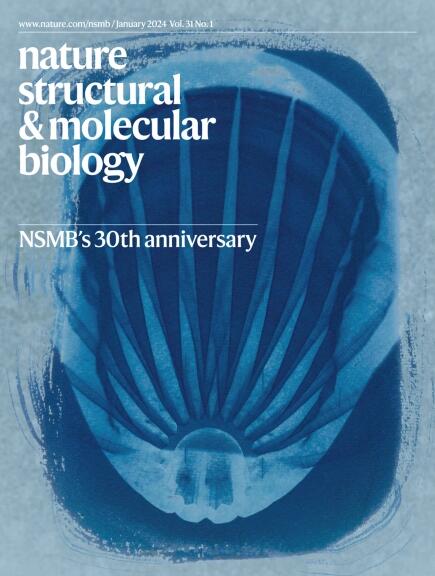Proton-triggered rearrangement of the AMPA receptor N-terminal domains impacts receptor kinetics and synaptic localization
IF 12.5
1区 生物学
Q1 BIOCHEMISTRY & MOLECULAR BIOLOGY
引用次数: 0
Abstract
AMPA glutamate receptors (AMPARs) are ion channel tetramers that mediate the majority of fast excitatory synaptic transmission. They are composed of four subunits (GluA1–GluA4); the GluA2 subunit dominates AMPAR function throughout the forebrain. Its extracellular N-terminal domain (NTD) determines receptor localization at the synapse, ensuring reliable synaptic transmission and plasticity. This synaptic anchoring function requires a compact NTD tier, stabilized by a GluA2-specific NTD interface. Here we show that low pH conditions, which accompany synaptic activity, rupture this interface. All-atom molecular dynamics simulations reveal that protonation of an interfacial histidine residue (H208) centrally contributes to NTD rearrangement. Moreover, in stark contrast to their canonical compact arrangement at neutral pH, GluA2 cryo-electron microscopy structures exhibit a wide spectrum of NTD conformations under acidic conditions. We show that the consequences of this pH-dependent conformational control are twofold: rupture of the NTD tier slows recovery from desensitized states and increases receptor mobility at mouse hippocampal synapses. Therefore, a proton-triggered NTD switch will shape both AMPAR location and kinetics, thereby impacting synaptic signal transmission. Combining patch-clamp electrophysiology, molecular dynamics simulations, cryo-electron microscopy and imaging of neuronal synapses, the authors reveal how AMPA glutamate receptors are regulated by protons that are released from synaptic vesicles during signal transmission.


质子触发的 AMPA 受体 N 端结构域重排影响受体动力学和突触定位
AMPA 谷氨酸受体(AMPARs)是离子通道四聚体,介导了大部分快速兴奋性突触传递。它们由四个亚基(GluA1-GluA4)组成;GluA2 亚基主导整个前脑的 AMPAR 功能。其细胞外 N 端结构域(NTD)决定受体在突触处的定位,确保可靠的突触传递和可塑性。这种突触锚定功能需要一个紧凑的 NTD 层,由 GluA2 特异性 NTD 接口稳定。在这里,我们展示了伴随突触活动的低 pH 条件会导致这一界面破裂。全原子分子动力学模拟显示,界面组氨酸残基(H208)的质子化是导致 NTD 重排的主要原因。此外,与它们在中性 pH 值下的典型紧凑排列形成鲜明对比的是,GluA2 的冷冻电镜结构在酸性条件下呈现出广泛的 NTD 构象。我们的研究表明,这种依赖于 pH 值的构象控制具有双重后果:NTD 层的断裂会减缓从脱敏状态恢复的速度,并增加受体在小鼠海马突触中的流动性。因此,质子触发的 NTD 开关将影响 AMPAR 的位置和动力学,从而影响突触信号的传递。
本文章由计算机程序翻译,如有差异,请以英文原文为准。
求助全文
约1分钟内获得全文
求助全文
来源期刊

Nature Structural & Molecular Biology
BIOCHEMISTRY & MOLECULAR BIOLOGY-BIOPHYSICS
CiteScore
22.00
自引率
1.80%
发文量
160
审稿时长
3-8 weeks
期刊介绍:
Nature Structural & Molecular Biology is a comprehensive platform that combines structural and molecular research. Our journal focuses on exploring the functional and mechanistic aspects of biological processes, emphasizing how molecular components collaborate to achieve a particular function. While structural data can shed light on these insights, our publication does not require them as a prerequisite.
 求助内容:
求助内容: 应助结果提醒方式:
应助结果提醒方式:


